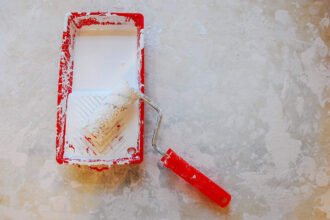Looking into the properties of the materials you rest in is a beneficial exercise to undertake. It provides you with insights into why sheets feel and drape a certain way, why some are more durable than others, and why some last longer. Discover the ultimate guide to choosing between cotton and linen bed sheets. Explore the benefits of each material, compare their unique properties, and make an informed decision for your perfect night’s sleep.
Bedding Battle: Cotton or Linen Bed Sheet – Which is Superior?
This piece primarily covers the key differences between cotton or linen bed sheet, which are widely regarded as the best materials for sheets.
Cotton
Cotton sheets are commonly used worldwide for bedding. Cotton is a natural fiber that is grown and obtains its strength from converting the fiber into yarn and then weaving the yarn into fabric. It is soft, possesses excellent insulating properties, and absorbs moisture quite well.
One advantage of cotton is its ability to be produced more frequently and at a lower cost compared to linen, reducing the expenses associated with manufacturing and, consequently, the final product’s price.

The most common misconception regarding cotton (and bed sheets in general) is that a higher thread count equals higher quality. However, what exactly is a thread count?
Thread count is not a sole indicator of quality; it only contributes to about 10% of the overall quality of bedding.
Other factors that play a significant role include the species and quality of the source cotton, its country of origin, the spinning process, and finishing materials. We will explore these factors in more detail in upcoming posts.
Linen
Linen is the world’s strongest natural fiber and is often considered the premium choice for bedding in Europe. It is derived from the flax plant, which also produces flax seeds, renowned as a super food.
Linen boasts various advantages, primarily associated with its longevity and its ability to become incredibly soft over time. It is highly prized for its insulating properties, trapping warmth in winter while allowing air circulation in the summer, thus keeping you cool.

The finest sources of linen in the world are France and Belgium, with Italy and Lithuania also highly regarded. These regions offer ideal growing conditions for the flax plant, resulting in the production of the highest-quality fibers, which are then transformed into linen fabric.
Pros of Cotton and Linen Bed Sheet
Some key advantages of linen sheets over cotton sheets include:
-
Quality and Durability
Linen, being a natural fiber from the flax plant, is approximately 25% stronger than cotton. This means that linen bed sheets are more durable and tend to last significantly longer, making them a cost-effective choice in the long run.
Linen also has a well-established reputation for becoming softer over time, often passed down through generations in European families.
-
Softening Over Time
While high-quality cotton may initially feel softer than linen, especially within the first six months of use, linen gradually softens significantly over time.
Flax fibers provide structure and shape to bedding and clothing, which can give linen a coarse feel. However, this coarseness largely depends on the quality of the flax species used.

Most linens used for bedding items, like Scottie’s, are of high quality and often ‘stonewashed,’ a process that further softens the linen by removing excess fibers, resulting in increased softness with each wash.
-
Insulation Properties
Linen is a natural insulator. The hollow fibers of the flax plant enable continuous air circulation and moisture absorption and release, making it an ideal choice for year-round comfort. It is prized for its ability to keep you cool in the summer months and provide warmth in colder conditions.
-
Environmental Friendliness
The cultivation and processing of flax are environmentally friendly, requiring less water, pesticides, and energy compared to most other natural fibers, including cotton. Typically, the flax plant, from which linen is derived, requires only one-fifth of the pesticides and fertilizers needed for cotton production.
-
Hypoallergenic Properties
Since linen is a natural fiber, similar to cotton, it is hypoallergenic, making it an excellent choice for individuals who suffer from allergies, such as asthma or hay fever. Linen’s loose weave also means it captures fewer dust mites and allergens, which can trigger allergic reactions, compared to cotton.
-
High Moisture Absorption
Linen sheets do not retain moisture as readily as cotton sheets do, so sweat or water (during washing) does not damage the fibers as quickly as it does with cotton.
In conclusion, the choice between cotton or linen bed sheets ultimately comes down to your personal preferences and priorities.
Cotton offers softness and versatility, while linen excels in durability, natural cooling, and sustainability. Whichever you choose, both materials have their own set of advantages to enhance your sleeping experience.
So, take the time to explore your options, consider your needs, and select the bed sheets that will provide you with the comfort and quality you deserve. Sweet dreams await!
People also ask:








